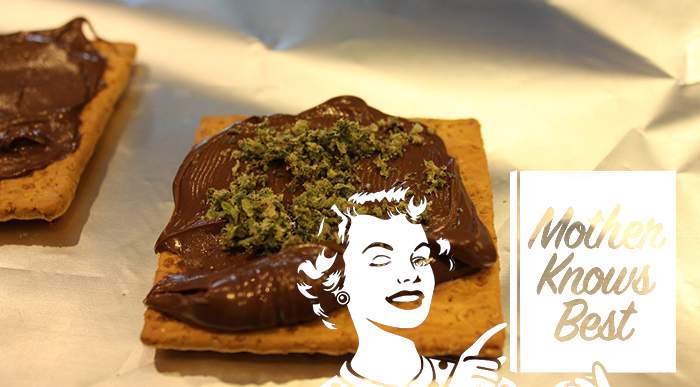Lead photo via iStock/ asiseeit; all other photos courtesy of Dr. Monnica Williams.
This year, Dr. Monnica T. Williams and a team of researchers began a study on a new treatment for post-traumatic stress disorder (PTSD) at the University of Connecticut (UConn). Though Dr. Williams has spent years studying trauma, this research presents the most daring and perhaps hopeful approach to coping with PTSD yet: MDMA-assisted psychotherapy.
Even in the field of psychedelic research, her study stands out as innovative. Hers is the only ongoing clinical MDMA study focused on healing racial and sexual traumas experienced by African Americans, Latinos, LGBTQ people, and other minority populations.
Dr. Williams stresses the importance of this focus, as most past and existing MDMA research was designed by, administered by, and conducted for white people: “Our site is the only [one] in the U.S. focused on the experiences of people of color, and that is really exciting.”
The story of this research begins in November 2016, when the U.S. Food and Drug Administration (FDA) granted permission for Phase III clinical trials of MDMA-assisted psychotherapy. This significant advance in MDMA research means it could become a legal medical treatment in the United States within a few years. The Multidisciplinary Association for Psychedelic Studies (MAPS) chose to sponsor and fund clinical research at over a dozen study sites throughout the United States and overseas.
MAPS first contacted Dr. Williams in 2016 for help in recruiting people of color for their studies. At that time, Williams had no prior experience studying MDMA or psychedelics. Instead, MAPS was intrigued by her career studying racial trauma and PTSD.

Dr. Monnica T. Williams of the University of Connecticut.
Dr. Williams described how her journey studying racial trauma began, at the University of Pennsylvania. She encountered a black woman experiencing symptoms of PTSD after being racially and sexually harassed in her workplace.
“This was a very successful and highly educated woman,” Williams said, “but when I saw her, she was so distraught, you couldn’t recognize her. The empirically-supported and scientifically-tested treatment for PTSD hadn’t worked for her, because we never addressed the issue of racism in her life. She’d been raised to think, ‘If I do everything right and play by the rules, everything will work out right for me’, and that didn’t happen for her.” Williams realized that the mental health field needed a more nuanced understanding of different forms of trauma.
After reading works published by MAPS, and watching videotapes of MDMA therapy sessions, Dr. Williams wondered if the drug could be helpful for black and brown people suffering from PTSD. She notes how the most currently accepted treatment — prolonged exposure (PE) — can be difficult for many patients, and especially for racial or demographic minorities.
PE therapy requires the patient to revisit their trauma again and again with a therapist, recounting the details of their experience until they are no longer frightening. According to a literature review in the Journal of Contemporary Psychotherapy, current PTSD treatments, including PE, are ineffective for 25-50% of patients enrolled in clinical trials. MDMA may present a promising alternative.
“This [MDMA] treatment is so much more humane than existing methods,” said Dr. Williams. “This is more palatable for the patient and the therapist. The patient gets so many helpful insights about themselves, and they look at the world through a new lens. There’s a lot less suffering involved.”
Dr. Williams speaks with the authority of personal experience: as a MAPS-sponsored MDMA researcher, she participated in a mandatory MDMA psychotherapy session in Colorado. Over the course of the session, she came face-to-face with her own childhood, when she was a tiny girl riding bikes around her neighborhood with her sisters.
“I hated remembering those years,” Williams explained. “My childhood and my family were a mess; there were all kinds of pains and traumas we experienced at home. And then, growing up, you feel assailed on all sides by racism and hate in all its forms. You’re taught that black people have to be strong — all the time. You can’t be off your game for a minute or disaster can happen.”
In the midst of her MDMA experience, Williams broke down crying and realized no one can be strong all the time — nor should they have to be. She saw then the healing potential of MDMA for people of color.

From L-R: Natalie L. Ginsberg, Director of Policy and Advocacy at MAPS; Monnica T. Williams, primary investigator of the UConn MDMA study; and Jamilah R. George, Post-Graduate Research Associate at Yale University and MDMA researcher on the UConn study.
One of the most promising MDMA studies to date focused on the traumatic experiences of military veterans, firefighters, and police officers. Over two-thirds of the participants in this study no longer qualified for a PTSD diagnosis one month after an MDMA treatment. These positive results were sustained, on average, for one year after treatment.
It is widely understood that military veterans are at high risk of PTSD. According to the National Center for PTSD, between 11-20% of veterans who served in the wars in Iraq or Afghanistan are diagnosed with PTSD in any year since the conflicts commenced.
But PTSD is hardly confined to this population. Between 7-8% of all Americans will have PTSD at some point in their lives, with women (10%) more at risk than men (4%). Civilians may experience trauma through sexual or violent abuse at home, at school, or in the workplace. One study even found that juvenile delinquents suffer from PTSD at a rate comparable to Iraq War veterans. The sponsor for the UConn study, MAPS, emphasized that anyone in any profession or period of life can be at risk of PTSD, and thus can benefit from this therapy.
“At its core, the treatment for veterans and for non-veterans is the same,” said Ismail Ali, Policy & Advocacy Counsel for MAPS. “The protocol is identical, the substance itself is identical, and the pre and post-work for the patient is also identical. So based on our data, it appears that MDMA for PTSD treatment may be effective for many different kinds of people, even when the source of their trauma varies significantly.”
In Dr. Williams’ study, her participants are black, brown, and LGBTQ people victimized by racism and sexism. “My team is seeing people who were bullied or teased in school, harassed by law enforcement, have witnessed their own children being abused, or have suffered physical or sexual abuse at home,” she said. “In almost every case, these traumas were ongoing for a period of time. It’s not widely known, but most people recover on their own from a single trauma without developing PTSD. It’s often an accumulation of multiple traumatic events that leads to the disorder.”

Box contains experimental dosage of MDMA used in UConn research trials.
Compared to other treatments for PTSD, MDMA-assisted psychotherapy is relatively straightforward. In this study, treatment proceeds in a three-step process, beginning with a traditional 90-minute therapy session with a team of two therapists. The 6-8 hour long MDMA session follows the next day, where the patient is given 100-125 milligrams of the drug.
The therapist team attends the session, but they let the process guide itself. “The patient isn’t talking the whole time,” Williams explained. “They’re often reclining on a sofa, they may wear eyeshades, and they listen to pre-selected music. They go back and forth between talking, while other times they just experience and address the trauma on their own. Their minds are almost healing themselves.”
The following day, the patient and therapist team meet again for another 90-minute session to discuss what they learned. This entire process may be repeated three times before the patient is assessed for PTSD based on existing measures like the Clinician-Administered PTSD Scale (CAPS-5).
MDMA appears to treat PTSD more quickly than existing methods. “The participant only receives the MDMA three times throughout the treatment,” Williams said, “unlike other medications that you have to take daily. And we’re seeing really durable effects — we don’t like to use the word ‘cure’, but that’s how many participants describe it themselves.”
The UConn study will proceed in two phases. The currently ongoing pilot phase is designed for researchers to receive feedback and guidance on their work to make sure therapy is administered according to standardized protocols. The team begins the second, randomized portion of the study this month. “Half will get a placebo and half will get the MDMA,” Williams said. “This is the phase that really ‘counts’ for the research, even though we collect useful data from the pilot phase.”

UConn’s MDMA psychotherapy room, decorated and designed to comfort research participants.
MAPS is confident MDMA-assisted psychotherapy will be legal by 2021. Ali explained that if this treatment is approved by the FDA, MDMA will be available on the drug market for qualified and approved practitioners to use in therapy sessions. With the help of private donations and grants, MAPS has fully funded the FDA Phase III process currently underway in the U.S., and is now fundraising for medical approval in the European Union.
But Ali conceded that many logistical and legal barriers remain for MDMA, including state regulations and uncertainty about the extent to which insurance companies will cover the treatment. “But that said, social barriers are quickly falling,” he said. “There is significant momentum and interest in the potential of MDMA for PTSD, and we feel confident that by the time MDMA is legally available, the misinformation, drug hysteria, and stigma that has been attached to it for so long will finally be replaced with strong scientific evidence for its incredible healing potential.”
Regarding equality of access for MDMA treatment, Ali stressed that minority and marginalized populations are disadvantaged in general with regards to mental healthcare outcomes, and any effort to increase MDMA access must go hand-in-hand with efforts to reduce these broader disparities. According to the U.S. Department of Health and Human Services, African Americans are less likely than white Americans to receive mental health counseling or treatment, including prescription medications. Black and Latino Americans also have higher uninsured rates than white Americans. That could nullify the promise of MDMA even if it were a legal medication covered by health insurance policies.
“Ultimately, we believe that therapists who come from or work with marginalized or underserved populations are best positioned to understand the needs of their own community, and we hope to empower them to bring healing to those populations,” Ali said. “MAPS is also in early stages of efforts to create points of access to fully-funded or reduced-cost therapist trainings, specifically for people who work with these populations. We encourage therapists who work with these populations to reach out to us!”
Before commencing research, Dr. Williams and her team revised many aspects of the existing study protocols to make them more suitable for people of color. These included changes to the informed consent documents given to participants, alterations of music and decorations displayed during therapy sessions, and enhancements to the training given to researchers.
“We’re constantly training our staff to understand that just because you’re a person of color, that doesn’t mean you understand all issues all other groups of people face,” says Dr. Williams. “So we’re always learning from each other. We’ve also worked with MAPS to diversify the group of independent raters who will administer the CAPS-5 scale to the participants. They’re learning how to be able to appropriately assess people who are not white.”
As excited as she is about her work underway at UConn, Dr. Williams knows this is only the beginning of a difficult process to make MDMA treatment more accessible and equitable. “At first, only people trained through MAPS will be able to treat people with MDMA,” she said. “There are not enough clinicians to meet the needs of communities of color. I don’t want this treatment to only be available for affluent white people. We need more people of color getting trained to do this, and then going into their communities to offer it.”











